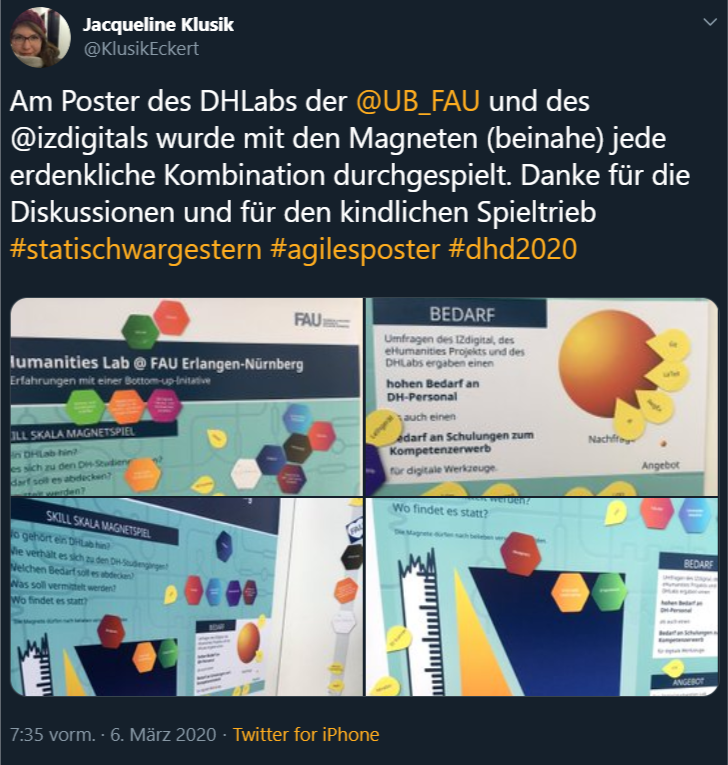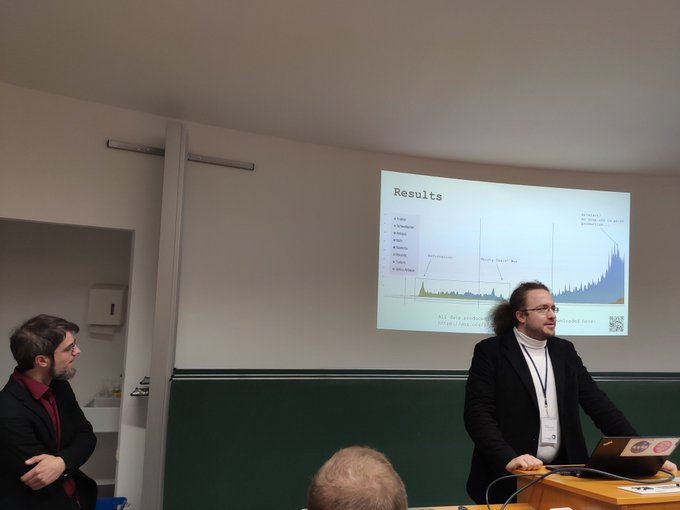The 7th annual conference of the Digital Humanities Association in the German-speaking world took place at the University of Paderborn. Under the motto “Digital Humanities between Modelling and Interpretation” the broad spectrum of the subject was presented during the conference days.
Modelling
Already the opening keynote by Julia Flanders from Northeastern University showed the current heterogeneous use of the term ‘modelling’ (from 1:22:30).
It is therefore not surprising that after the last annual conferences on the ‘Kritik der digitalen Vernunft’ in Cologne in 2018 and ‘multimedial & multimodal’ in Frankfurt and Mainz in 2019, a strong sensitization for term formation and term use has taken place. This trend was not only noticeable in most sections, but was also reflected in the foundation of a new working group at the DHd. The working group will deal with theory and theory formation in the digital humanities. The newly founded blog will report regularly on the activities of the group, which can be found at https://dhtheorien.hypotheses.org/
IZdigital members at the DHd2020
Peter Bell and Fabian Offert asked about the new scope of Digital Humanities
in the field of machine learning. For this purpose, they deconstructed established computer vision models using methods of image science/visual studies.
historical understanding of space and the knowledge associated with it.
Apart from the Digital Humanities courses at FAU Erlangen-Nuremberg, i.e. for the broad mass of students and doctoral candidates, the acquisition of digital competence and the exchange with like-minded people is largely limited to self-study and informal exchange. With the Digital Humanities Lab (DHLab), the University Library Erlangen-Nuremberg, the IZdigital and the Faculty of Philosophy together want to fill this gap or at least reduce it.
To this end, the motto of the conference was playfully implemented in an interactive poster: On the magnetic surface, different scenarios could be played out to enter into an active exchange on data literacy, infrastructure and training needs with the conference topics.
This creative solution was then honoured with the 2nd place of the Poster Award.


Slides and Data Set
Weichselbaumer, Nikolaus, Seuret, Mathias, Limbach, Saskia, Hinrichsen, Lena, Maier, Andreas, & Christlein, Vincent. (2020). The Rapid Rise of Fraktur, DHD 2020, Data [Data set]. Zenodo. http://doi.org/10.5281/zenodo.3598515
Abstracts
You can read about the many contributions in the comprehensive Book of Abstracts, which is available again this year in various formats:
Schöch, Christof. (2020). DHd 2020 Spielräume: Digital Humanities zwischen Modellierung und Interpretation. Konferenzabstracts. Christof Schöch. http://doi.org/10.5281/zenodo.3666690

